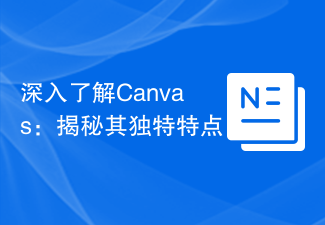 Backend Development
Backend Development Python Tutorial
Python Tutorial An in-depth study of the principles and methods of Python data type conversion functions
An in-depth study of the principles and methods of Python data type conversion functions
In-depth understanding of the principles and methods of Python data type conversion functions requires specific code examples
Python is a concise and powerful programming language that provides a wealth of Data types and flexible type conversion functions make data processing more convenient. In this article, we will delve into the principles and usage of data type conversion functions in Python, and provide some specific code examples.
The data type conversion functions in Python mainly include the following:
- int() function: used to convert a number or string to an integer type.
Example 1:
num_str = "123" num_int = int(num_str) print(type(num_int), num_int) # 输出:<class 'int'> 123
Example 2:
num_float = 3.14 num_int = int(num_float) print(type(num_int), num_int) # 输出:<class 'int'> 3
- float() function: used to convert a number or string to a floating point type .
Example 1:
num_str = "3.14" num_float = float(num_str) print(type(num_float), num_float) # 输出:<class 'float'> 3.14
Example 2:
num_int = 123 num_float = float(num_int) print(type(num_float), num_float) # 输出:<class 'float'> 123.0
- str() function: used to convert an object to a string type.
Example 1:
num_int = 123 num_str = str(num_int) print(type(num_str), num_str) # 输出:<class 'str'> '123'
Example 2:
num_float = 3.14 num_str = str(num_float) print(type(num_str), num_str) # 输出:<class 'str'> '3.14'
- list() function: used to convert a sequence (such as string, tuple, collection, etc.) to list type.
Example 1:
str_seq = "Python" list_seq = list(str_seq) print(type(list_seq), list_seq) # 输出:<class 'list'> ['P', 'y', 't', 'h', 'o', 'n']
Example 2:
tuple_seq = (1, 2, 3) list_seq = list(tuple_seq) print(type(list_seq), list_seq) # 输出:<class 'list'> [1, 2, 3]
- tuple() function: used to convert a sequence (such as list, string, set etc.) to a tuple type.
Example 1:
list_seq = [1, 2, 3] tuple_seq = tuple(list_seq) print(type(tuple_seq), tuple_seq) # 输出:<class 'tuple'> (1, 2, 3)
Example 2:
set_seq = {1, 2, 3}
tuple_seq = tuple(set_seq)
print(type(tuple_seq), tuple_seq) # 输出:<class 'tuple'> (1, 2, 3)- set() function: used to set a sequence (such as list, tuple, character string, etc.) to a collection type.
Example 1:
list_seq = [1, 2, 3, 2, 1]
set_seq = set(list_seq)
print(type(set_seq), set_seq) # 输出:<class 'set'> {1, 2, 3}Example 2:
str_seq = "hello"
set_seq = set(str_seq)
print(type(set_seq), set_seq) # 输出:<class 'set'> {'e', 'l', 'h', 'o'}It should be noted that conversion between certain types may result in loss of precision or information in the data Lost, especially in conversions between numeric types. Therefore, when using data type conversion functions, you need to carefully consider possible data changes.
To summarize, Python provides data type conversion functions such as int(), float(), str(), list(), tuple() and set(), which can perform mutual conversion between different data types. Convert. These functions are very simple and easy to use. You only need to pass the object to be converted as a parameter to the corresponding function. In actual code development, we can choose appropriate data type conversion functions according to specific needs and scenarios to better process and operate data.
I hope this article will help you deeply understand the principles and methods of Python data type conversion functions. Through actual code examples, you can better master the usage skills of these functions, allowing you to process and transform data more flexibly. I wish you go further and further on the road of Python programming!
The above is the detailed content of An in-depth study of the principles and methods of Python data type conversion functions. For more information, please follow other related articles on the PHP Chinese website!
 探索id选择器的语法结构的深层次理解Jan 03, 2024 am 09:26 AM
探索id选择器的语法结构的深层次理解Jan 03, 2024 am 09:26 AM深入了解id选择器的语法结构,需要具体代码示例在CSS中,id选择器是一种常见的选择器,它根据HTML元素的id属性来选择对应的元素。深入了解id选择器的语法结构可以帮助我们更好地使用CSS来选择和样式化特定的元素。id选择器的语法结构非常简单,它使用井号(#)加上id属性的值来指定选择的元素。例如,如果我们有一个HTML元素的id属性值为"myElemen
 揭秘localstorage:探索其真实本质Jan 03, 2024 pm 02:47 PM
揭秘localstorage:探索其真实本质Jan 03, 2024 pm 02:47 PM深入了解localstorage:它到底是什么文件?,需要具体代码示例本文将深入探讨localstorage是什么文件,并提供具体的代码示例,帮助读者更好地理解和应用localstorage。localstorage是一种用于在Web浏览器中存储数据的机制。它可以在用户的浏览器中创建一个本地文件,用于存储键值对数据。这个文件是永久性的,即使在浏览器关闭后,数
 深入掌握Canvas技术的应用Jan 17, 2024 am 09:14 AM
深入掌握Canvas技术的应用Jan 17, 2024 am 09:14 AMCanvas技术是Web开发中非常重要的一个部分,通过Canvas可以实现在网页上绘制图形和动画。如果你想在Web应用中加入图形、动画等元素,那么Canvas技术千万不能错过。在本文中,我们将深入了解Canvas技术,并提供一些具体的代码示例。Canvas简介Canvas是HTML5的元素之一,它提供了一种在网页上动态绘制图形和动画的方法。Canvas提供了
 探索Java中的Cookie:揭开其真面目Jan 03, 2024 am 09:35 AM
探索Java中的Cookie:揭开其真面目Jan 03, 2024 am 09:35 AM深入了解Java中的Cookie:它到底是什么?在计算机网络中,Cookie是一个存放在用户计算机上的小型文本文件。它由Web服务器发送给Web浏览器,然后保存在用户本地的硬盘上。每当该用户再次访问同一网站时,Web浏览器会将该Cookie发送给服务器,从而提供个性化的服务。Java中也提供了Cookie类来处理和管理Cookie。一个常见的例子是购物网站,
 暸解JavaScript的五種緩存機制實現方法Jan 23, 2024 am 09:24 AM
暸解JavaScript的五種緩存機制實現方法Jan 23, 2024 am 09:24 AM深入了解:JS缓存机制的五种实现方式,需要具体代码示例引言:在前端开发中,缓存机制是优化网页性能的重要手段之一。通过合理的缓存策略,可以减少对服务器的请求,提升用户体验。本文将介绍五种常见的JS缓存机制的实现方式,并附带具体的代码示例,以便读者更好地理解和应用。一、变量缓存变量缓存是最基础也是最简单的一种缓存方式。通过将一次性计算的结果存储在变量中,避免重复
 深入了解Canvas:揭秘其独特特点Jan 06, 2024 pm 11:48 PM
深入了解Canvas:揭秘其独特特点Jan 06, 2024 pm 11:48 PM深入了解Canvas:揭秘其独特特点,需要具体代码示例随着互联网技术的快速发展,应用程序的界面设计也变得越来越多样化和富有创意。HTML5技术的出现为开发人员提供了更多丰富的工具和功能,其中Canvas是一个非常重要的组件。Canvas是HTML5中新增的一个标签,它可以用来在网页中绘制图形,制作交互性强的动画和游戏等。本文将深入探讨Canvas的独特特点,
 了解Canvas:支持哪些编程语言?Jan 17, 2024 am 10:16 AM
了解Canvas:支持哪些编程语言?Jan 17, 2024 am 10:16 AM深入了解Canvas:支持哪些语言?Canvas是一种强大的HTML5元素,它提供了一种使用JavaScript绘制图形的方法。作为一个跨平台的绘图API,Canvas不仅支持绘制静态图像,还可以用于动画效果、游戏开发、数据可视化等领域。在使用Canvas之前,了解Canvas支持哪些语言是非常重要的。本文将深入探讨Canvas所支持的语言。JavaScri
 深入了解PHP数组中数据类型的查询方法Mar 13, 2024 pm 03:06 PM
深入了解PHP数组中数据类型的查询方法Mar 13, 2024 pm 03:06 PMPHP是一种广泛使用的服务器端脚本语言,常用于Web开发。在PHP中,数组是一种非常常见的数据类型,它能够存储多个值。在对数组进行操作时,了解数组中数据的类型是非常重要的,因为不同的数据类型可能需要使用不同的方法来查询。一、查询数组中数据类型的方法PHP中可以使用以下几种方式来查询数组中数据的类型:使用gettype()函数:该函数可以返回一个变


Hot AI Tools

Undresser.AI Undress
AI-powered app for creating realistic nude photos

AI Clothes Remover
Online AI tool for removing clothes from photos.

Undress AI Tool
Undress images for free

Clothoff.io
AI clothes remover

AI Hentai Generator
Generate AI Hentai for free.

Hot Article

Hot Tools

SAP NetWeaver Server Adapter for Eclipse
Integrate Eclipse with SAP NetWeaver application server.

Dreamweaver Mac version
Visual web development tools

ZendStudio 13.5.1 Mac
Powerful PHP integrated development environment

Atom editor mac version download
The most popular open source editor

SublimeText3 Linux new version
SublimeText3 Linux latest version





